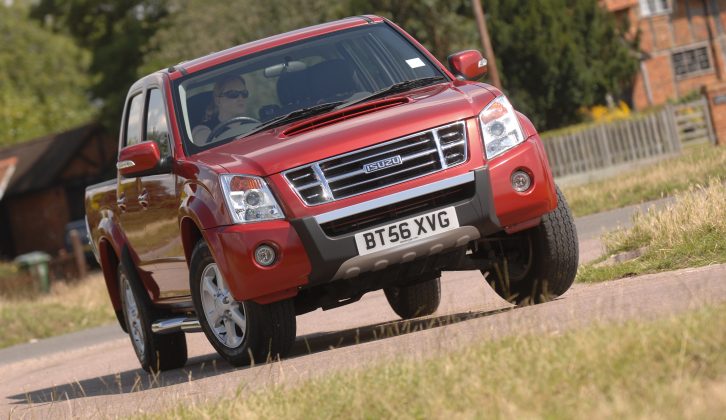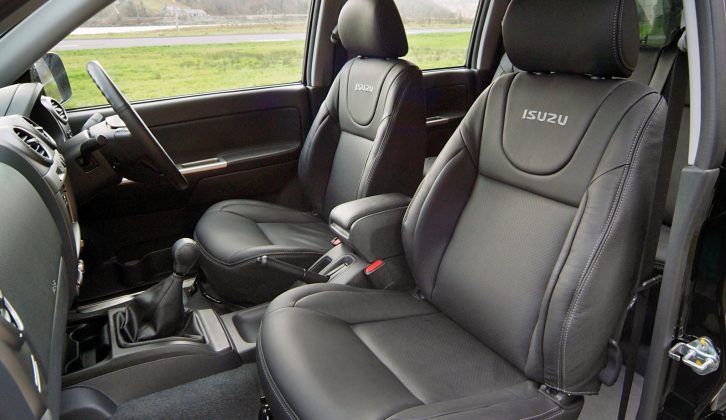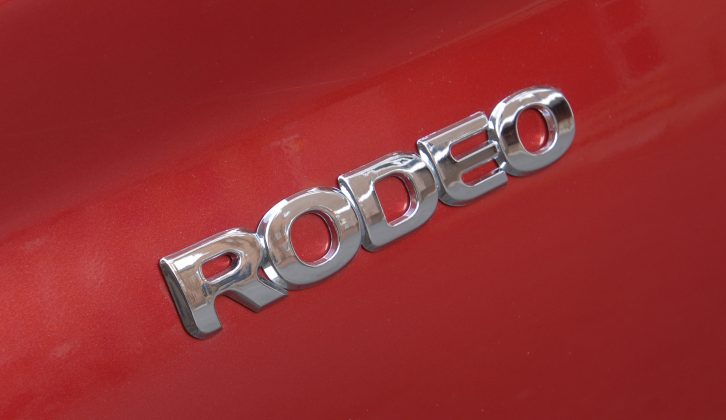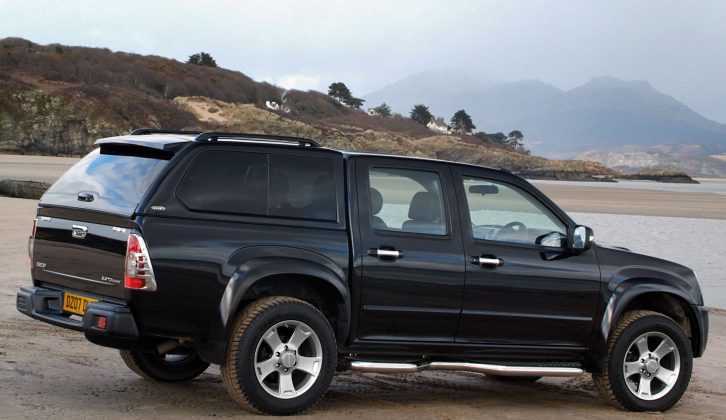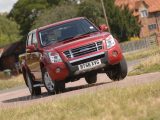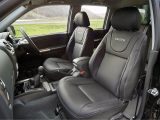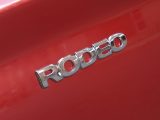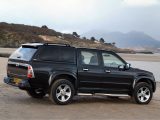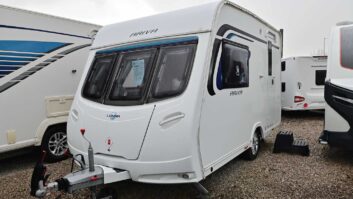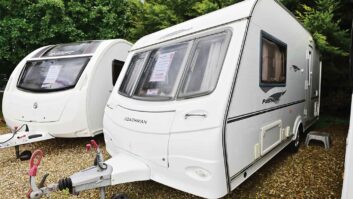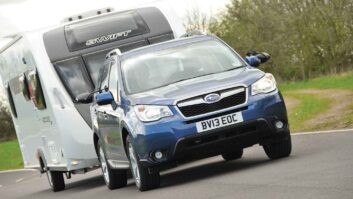Imagine you’ve popped into a DIY store, because you’ve got some serious sticking to do. On the shelf there’s a familiar brand of regular glue and some no-nonsense, professional stuff. Which do you choose?
If it’s the latter, a 2003-2012 Isuzu Rodeo may also appeal to you when the time comes to buy your next tow car, because this is the industrial-strength alternative to a mere car. The packaging may not be pretty, but you still get four doors and plenty of seats – and it really will get the job done.
The Rodeo was introduced to replace the TF pick-up and the similarly rugged and respected Isuzu Trooper, because the manufacturer recognised that the American-led double-cab pick-up market was taking off worldwide. That’s why it dropped the old ‘big box’ design.
There was also a single-cab, long-bed version, but these were less family-friendly and most will have been worked to death by builders and farmers – all the more reason to focus on the double-cab models.
Model history
The initial engine offerings were a bit agricultural and biased towards load-lugging rather than performance. The entry-level version was a 100bhp/167lb ft 2.5TD, but most buyers opted for the 3.0TD (130bhp/207lb ft). Isuzu quickly recognised that this left the Rodeo off the pace, so it offered the optional, dealer-fit Prodrive Performance Pack for the 3.0TD: it boosted power to 155bhp and torque to 275lb ft. Look out for those.
The Rodeo was the first big pick-up in the UK to be offered with an optional automatic gearbox, a four-speed. Standard fit was a five-speed manual, but there are plenty of autos about, even though there was an £800-£1000 premium for them when they were new. All but a few base-level models are fitted with switchable four-wheel drive, with a selectable low-range gearset for off-road work.
The range was facelifted in April 2007 with improvements throughout, making them highly desirable. The choice of engine sizes remained the same, but they were new common-rail I-TEQ units. They were quieter and a couple of mpg more economical. They were also significantly more powerful, boasting 136bhp/217lb ft for the 2.5 and 163bhp/246lb ft for the 3.0. New gearboxes joined the mix, but a five-speed manual remained standard and an auto ’box was an option on the 3.0TD.
Trim levels in ascending order are: Rodeo, Denver Max and Denver Max LE. All have ABS, EBD, radio/CD players and four-speed wipers. The Denver adds air conditioning and interior upgrades, while the LE gets leather seats, big alloys and a hardtop for the bed. Particulate filters weren’t fitted until November 2011.
Trouble spots
Check the chassis and underside for rust. If it’s OK, keep it that way by having it sprayed with rustproofer. Otherwise this can become an issue. As ever with pick-ups, the condition of the load area can provide plenty of clues as to the kind of life it has led. If it is nice and shiny, has it been repainted? Also look for clues in the nooks and crannies that are hard to clean.
On your test drive, try the transmission in all three modes: two-wheel drive, four-wheel drive and low range. If it’s at all reluctant to shift between modes, or if switching sets off noises or vibration, there’s likely to be an issue with the transfer box. This may not kill a deal on an otherwise good truck, but it will cost the thick end of a grand to fix.
Watch out for excessive smoke when the engine is fired up, and be suspicious if it has been thoroughly pre-warmed before your arrival. It will usually be accompanied by feeling down on power when you accelerate, in which case it’s probably a duff injector pump – about £300 or so to fix.
Electric window problems are relatively common on Rodeos, so ensure that they all go up and down properly. The problem is more often with the switches than the motors, but can still cost £150 a window to put right.
On another electrical note, make sure the ignition-key barrel isn’t loose and holds the key tightly. If it is worn, that’s another £300 bill on the way.
Verdict
Avoid one with the few issues mentioned and you’ll have a big, chunky machine that seats five, has massive practicality and has the grunt and stability to make towing almost anything a breeze.
Rodeos are built for durability and tend to hold their value well. It also helps that there aren’t many about. Just don’t blame me if you start buying lots of Timberland clothing…
From the Isuzu Rodeo range, our top tug is the Rodeo Denver Max LE 3.0TD. With this, you go the whole hog and get all the kit and comfort of a big car or 4×4. Top-end Rodeos are also more likely to have been family cars. However, the model we’d avoid is the Rodeo 2.5TD – it’s not bad, but most of the rest are better. This is the trade end of the range – short on comfort and more likely to have been worked hard as a tool.
What you need to know
The truth is that there aren’t many Rodeos at the quoted lower limit, and those will be early models on the tired side.
The preferable post-facelift Rodeos cost closer to £6000 and upwards, or £7500-plus if you want one with less than 100,000 miles on the clock. You needn’t get too hung up on mileage, however, as long as the price and service history are right; these vehicles are built to last and rack up high mileages. The best examples cost £10,000 or more. On the plus side, these Isuzus tend to fall slowly in value from that point if looked after, and new owners are not hard to find.
Here are some useful figures (for a 2008 Isuzu Rodeo 2.5TD Denver Max):
- Kerbweight 1875kg
- 85% match 1594kg
- Towing limit 3000kg
- Towball limit 120kg
If you’re looking to hitch up your caravan, you need to fit a towball, so we got quotes from PF Jones. A Witter flange towbar will cost £125.14 and a Bosal flange towbar is £170.99, fitting extra. And when it comes to servicing, according to quotes we got from Servicing Stop, an interim service will cost around £144.44, while you can expect a full service to be around £211.11.
The condition of the load area can provide plenty of clues as to the kind of life it has led
